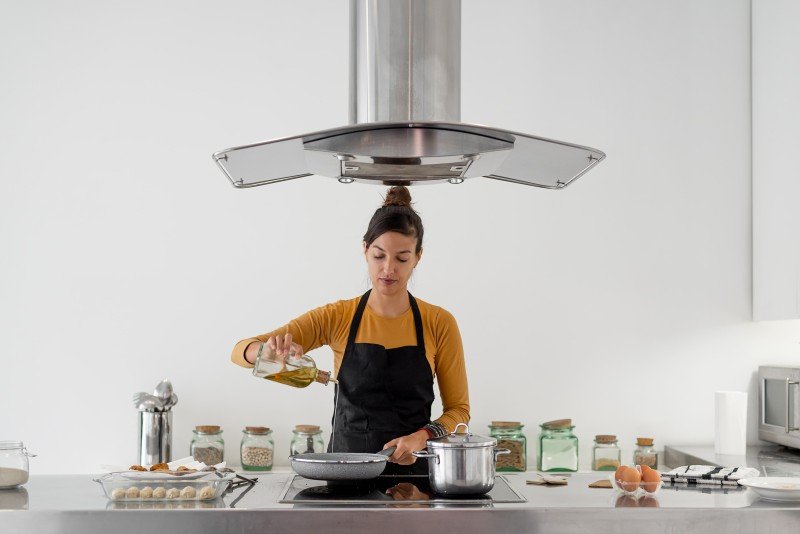An Easy-To-Follow Guide To Oven And Hob

Understanding Kitchen Ovens and Hobs: A Comprehensive Guide
The kitchen is typically referred to as the heart of the home, and for great factor. It is where households come together, meals are prepared, and memories are developed. related web site to this cooking haven are two necessary home appliances: the kitchen oven and the hob. Comprehending their functions, types, and functionalities is essential for effective cooking and can significantly boost a home chef's experience. This post will explore the world of kitchen ovens and hobs, analyzing their different types, advantages, and tips for making notified choices.
Table of Contents
- Intro to Kitchen Ovens
- Kinds of Ovens
- Traditional Ovens
- Convection Ovens
- Microwave Ovens
- Steam Ovens
- Understanding Hobs
- Kinds of Hobs
- Gas Hobs
- Electric Hobs
- Induction Hobs
- Benefits of Using Ovens and Hobs
- Choosing the Right Oven and Hob for Your Kitchen
- Maintenance Tips for Ovens and Hobs
- FAQs
- Conclusion
1. Intro to Kitchen Ovens
Ovens are indispensable devices in modern kitchen areas. They offer a controlled environment for baking, roasting, and broiling food. With different styles and functionalities, picking the ideal oven can dramatically affect cooking times, food texture, and flavor.
2. Kinds of Ovens
Standard Ovens
Traditional ovens are the most typical type found in homes. They use either electric or gas power to heat up the interior and usually include a single cooking area.
Advantages:
- Versatile for baking, roasting, and broiling.
- Usually affordable.
Convection Ovens
Stove are comparable to conventional ovens but come equipped with a fan that flows hot air throughout the cooking chamber. This results in even cooking and browning.
Advantages:
- Reduced cooking times due to enhanced air flow.
- Enhanced browning and crisping of foods.
Microwave Ovens
Microwave utilize electromagnetic radiation to heat food rapidly, making them hassle-free for defrosting and reheating leftovers.
Advantages:
- Very quickly cooking times.
- Energy effective.
Steam Ovens
Steam ovens use steam to prepare, preserving the wetness and nutrients in food. They are particularly popular among health-conscious cooks.
Benefits:
- Healthier cooking option.
- Retains vitamins and minerals in food.
3. Comprehending Hobs
Hobs, likewise understood as cooktops, are the flat surfaces on which pots and pans are put to cook food. They can be integrated into kitchen counter tops and are available in various designs, fuel types, and styles.
4. Kinds of Hobs
Gas Hobs
Gas hobs use burner as their heat source, using instant heat and exact temperature control.
Advantages:
- Excellent control over cooking heat.
- Normally more affordable to operate than electric ones.
Electric Hobs
Electric hobs heat using electric coils or glass surface areas. Info may take longer to heat up than gas, however they offer a smooth cooking surface area and are easier to clean up.
Advantages:
- Even heat circulation.
- Safe, as there's no open flame.
Induction Hobs
Induction hobs use electromagnetic energy to directly warm pots and pans. They need compatible pots and pans and deal instant responsiveness.
Benefits:
- Highly energy-efficient.
- Faster cooking times and accurate temperature level control.
5. Benefits of Using Ovens and Hobs
Both ovens and hobs come with their own distinct set of benefits that can improve any cooking experience. Here are a few essential advantages:
- Diverse Cooking Options: Both appliances permit a series of cooking techniques consisting of boiling, frying, roasting, baking, and steaming.
- Time Efficiency: Modern ovens and hobs often include fast cooking settings, which conserve time in the kitchen.
- Precision Cooking: With advanced functions, users can achieve better outcomes in temperature level control and cooking times.
6. Choosing the Right Oven and Hob for Your Kitchen
When picking the right oven and hob, numerous factors must be thought about:
- Size: Ensure that the appliance fits conveniently in your kitchen space.
- Cooking Style: Consider what types of food you frequently prepare.
- Fuel Type: Whether gas or electric, think about accessibility and performance in your area.
- Budget plan: Determine your budget and find devices that meet your needs within that variety.
Checklist for Choosing Your Oven and Hob:
- Assess kitchen space.
- Recognize your cooking choices.
- Determine source of power availability.
- Compare features and requirements.
- Set a budget plan variety.
7. Maintenance Tips for Ovens and Hobs
Regular maintenance is important for keeping ovens and hobs in optimum condition. Here are some upkeep suggestions:
- Clean Regularly: Wipe down surfaces after each use and deep clean occasionally.
- Examine Seals: For ovens, inspect door seals to ensure they are airtight.
- Examine Burners: For gas hobs, keep burners complimentary of food particles to keep effective heating.
- Change Filters: If your oven has a filter, replace it as suggested by the maker.
8. FAQs
1. What is the distinction between a conventional oven and a convection oven?Conventional ovens
prepare food through convected heat, while convection ovens circulate hot air, resulting in much faster and more even cooking. 2. Do induction hobs need unique cookware?Yes,
induction hobs need ferrous pots and pans that is capable of being magnetized to work efficiently. 3. Are steam ovens worth the investment?For health-conscious people or those who frequently cook veggies and fragile foods, steam ovens can be worth the investment
due to their ability to keep nutrients. 4. Can I combine an oven and hob into one unit?Yes, lots of makers provide combined units referred to as variety cookers, which incorporate both an oven
and hob into a single device. 9. Conclusion Kitchen ovens and hobs are essential elements of any cooking space, each offering distinct features and functionalities fit for different cooking designs.
By comprehending the
types of ovens and hobs readily available, their advantages, and how to maintain them, home chefs can cultivate a more effective and pleasurable cooking experience. Whether one is a seasoned cook or a novice, making informed decisions about these necessary kitchen devices is vital.

